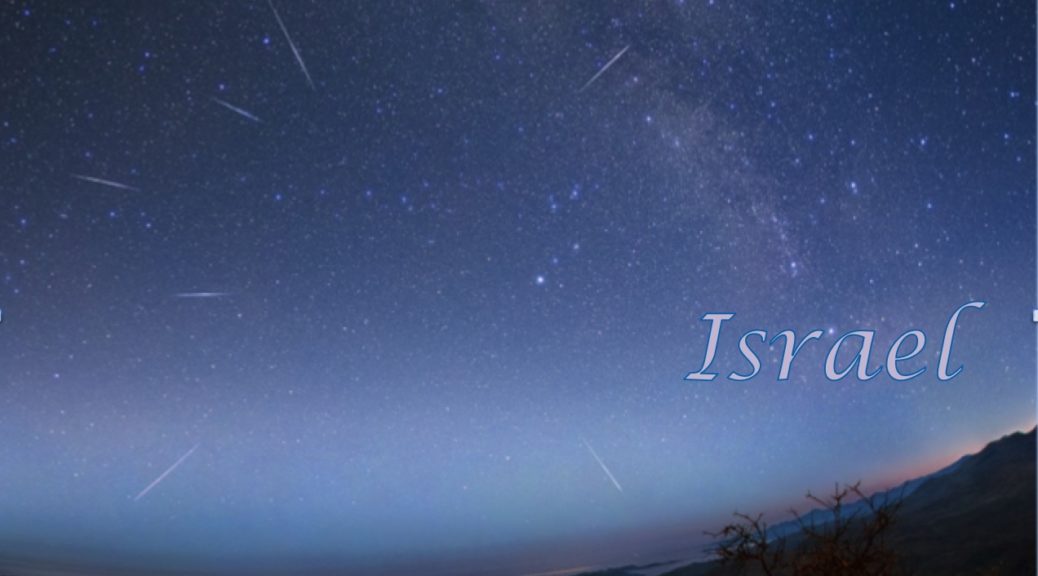Every 22nd of April, meteor showers out of the
constellation Lyra sometimes occur on Passover.
Vega, the brightest star in the constellation,
in Arabic means, He shall be exalted.
Before the light of creation would rise
above the horizon, shooting stars streaked
across the Passover skies over Jerusalem.
Nighthawks folded their wings, fell silent.
In unison, the olive trees stretched
their crooked branches, jabbed the dawning
sky swabbed purple & crimson. The umber
silhouette of trees, in the same silence.
A voice cried out from the wilderness
inside the holy man kneeling there, the weight of all
the children’s dreams, his brothers’ and the world’s
sin heavy on his heart. Blood seeped through,
through his pores as he languished in prayer,
fallen on his face, the taste of dirt on his lips:
Father. Please let this cup of bitterness pass!
However, not my will but yours be done.
An angel might have lifted him up, wiped his tears,
and offered cool water from the clear brook,
before fading. His close friends were still lost
in their dreams, fast asleep on the lavender grass.
A serpent slithered on the rocks with stardust
glow, coiled its leathery skin shining like jewels,
then raised its diamond head, fake smile; rattled
a hiss of lies; fangs exposed ready to strike.
But the holy one only felt the kiss of a soft wind
…before Judas came.
Image credit: Astronomy Picture of the Day (APOD) April 24, 2014: Lyrids in Southern Skies, Yuri Beletsky (Las Campanas Observatory, Carnegie Institution)
Author’s Comments: The Lyrid meteor shower occurs as Earth goes through Comet Thatcher’s debris around April 22 each year, which means that sometimes the Lyrid meteor shower occurs on or around Passover. The showers are generally moderately weak (15-20/hr) but periodically Earth intersects denser portions of the cloud, and the sky can become brilliant with meteors that seem to come out of the constellation Lyra (90-100/hr). This occurs every 60 years when the other planets steer thicker parts of the dust cloud into Earth’s path. But the showers are greatly enhanced when the comet returns every 415 years and re-seeds the comet dust clouds, as in 1803 (700/hr) and in 687 BC as Zuo Zhuan had written “stars fell like rain.” Beginning with 687 BC as a reasonable starting point and stepping forward every 60 years, we learn that an enhanced Lyrid meteor shower could have occurred during the Passover in 33 AD, the possible date for Christ’s crucifixion.
- William Whispers In My Ear by John C. Mannone - May 1, 2023
- Χαίρω by John C Mannone - December 18, 2022
- From a Long Line of Trees by John C. Mannone - April 19, 2022

